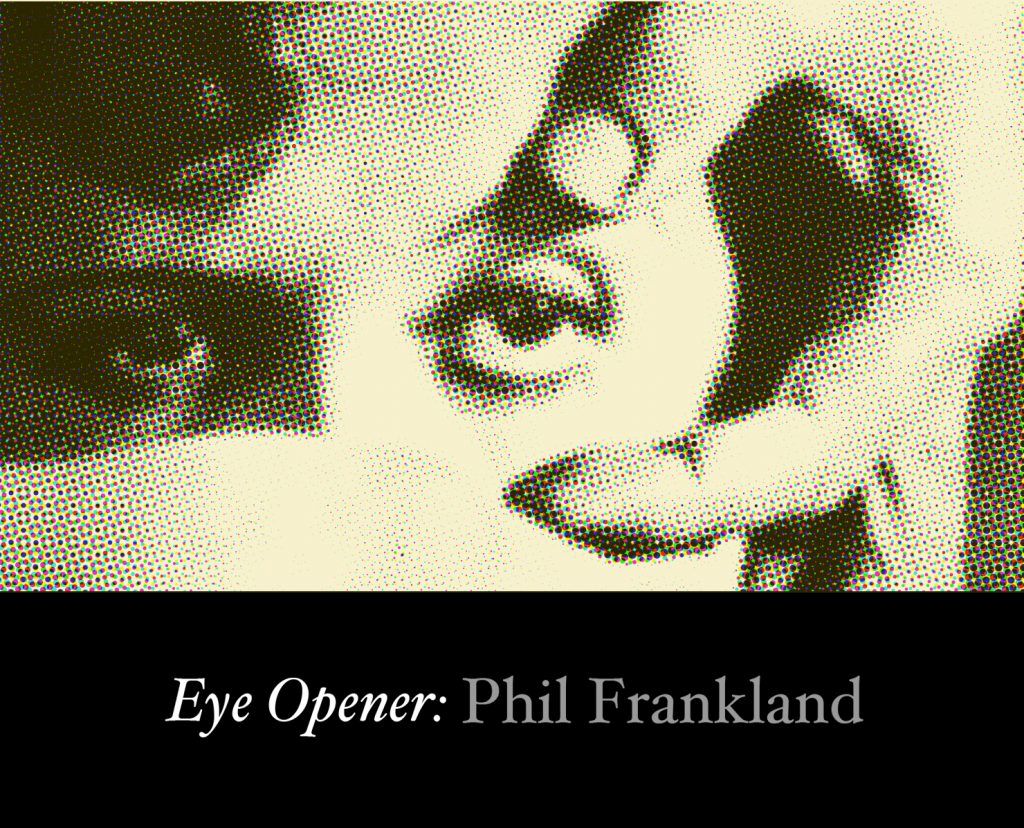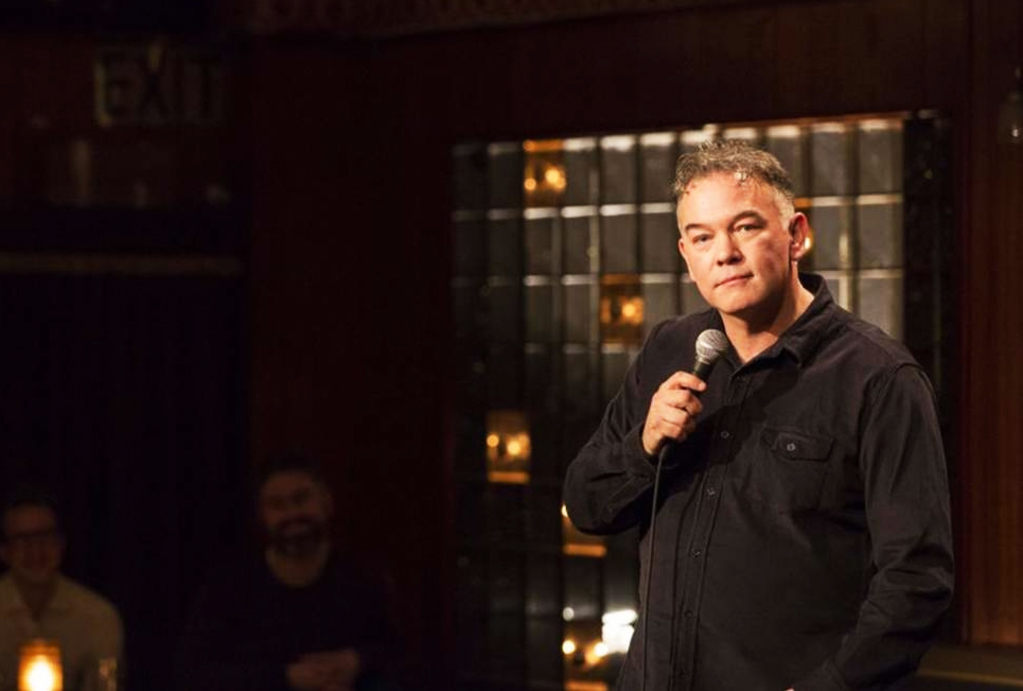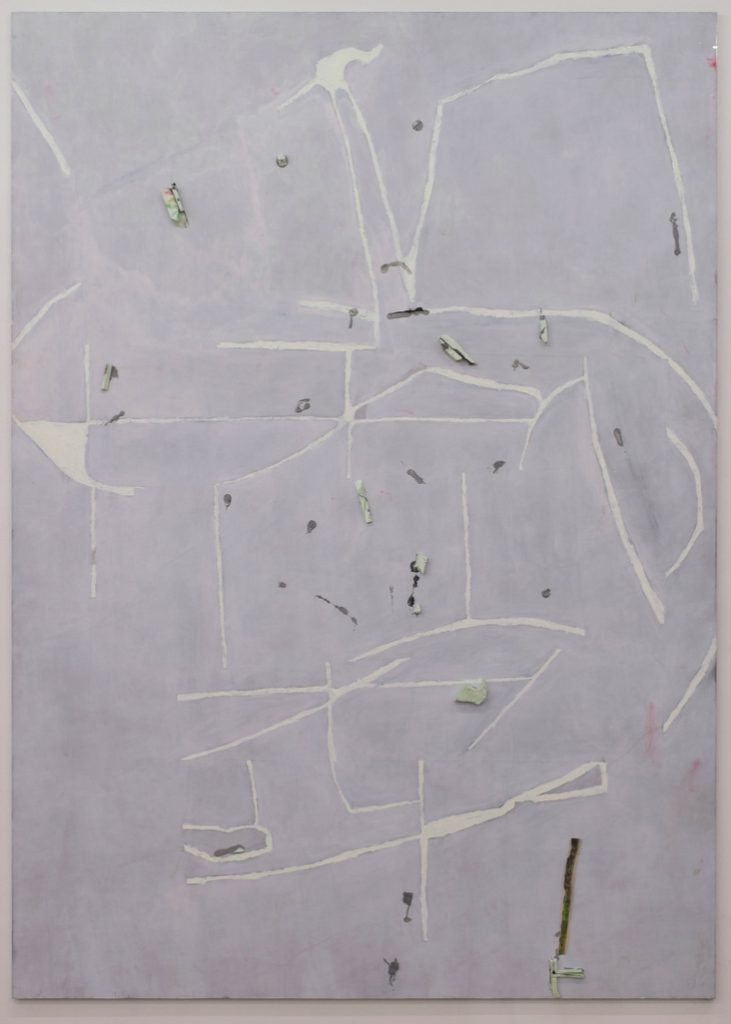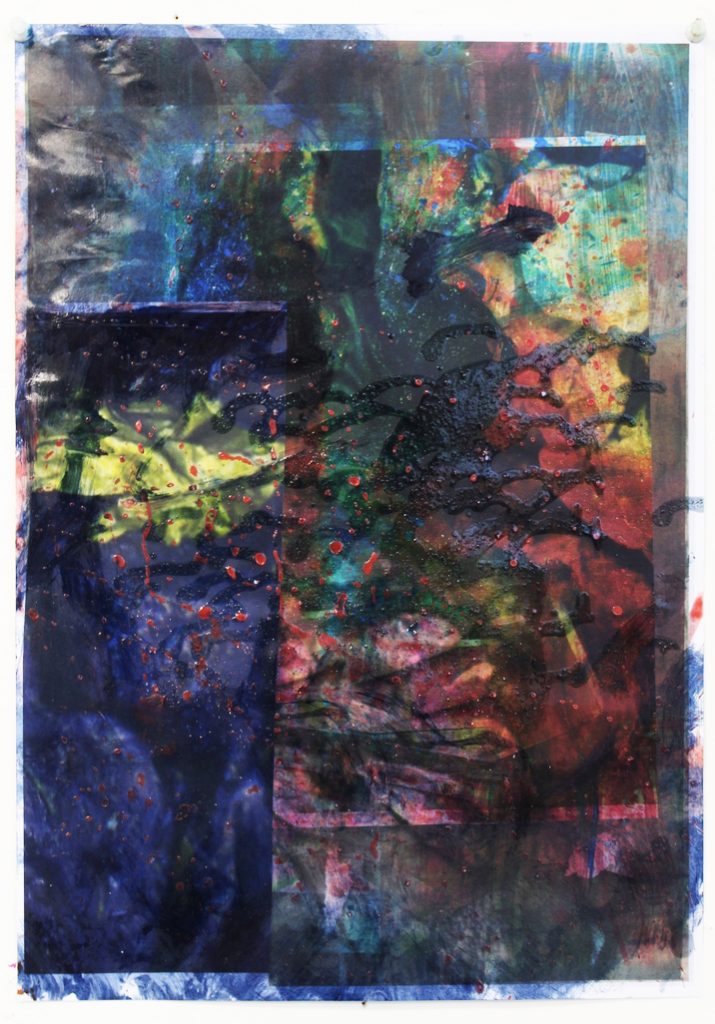Eye Opener: Phil Frankland

In the latest addition to the series, painter Phil Frankland finds common ground with comedian Stewart Lee, playing off the intentional against the haphazard…
‘So, I don’t want to waste any time faffing around or trying to create a good atmosphere in the room, so what I’m going to ask you to do in about 30 seconds is clap for about three seconds. Not as if it were the top of the show; I don’t want any whooping or cheering, but just clap as if I’d already been on for about a quarter of an hour and it was going all right and everyone is in a good mood.’
‘Stewart Lee’s Comedy Vehicle’, Se03 Ep02

The first time I became aware of comedian and writer Stewart Lee was through tagging along with friends to a gig at the Edinburgh Fringe festival several years ago. The memories of this event are mixed: the audience’s fairly tepid reaction to Lee’s material and a certain level of curiosity and intrigue on my part. Lee’s hour-long set felt self-generating: he processed his own content with a quality control that was woven into the show through stop-start routines and idle off-track musings, constantly assessing- with an air of arrogance- whether the audience were really engaging with his material through deliberately provocative questioning and drawn-out pauses.

It was only several years later that the crossovers between Stewart Lee’s self-analytical, reflexive musings and my own art practice became apparent. Within Lee’s routines exist levels of success and failure which he accepts as the arbitrary consequence of being a comedian – some jokes land, some fall flat. The actual material is immaterial, so to speak. The blurring of boundaries between the intentionally-scripted parts of his routine and the fallout from his haphazard stop-start musings, bear striking similarities to my approach to painting. What parades as intended action is parody; purpose blurs with luck or loose intuition.
As an artist, I try to sidestep any familiar lineage of painting-making, in order to explore freedom of content and material. Playing with both handmade and digital sources of mark-making results in a deep intimacy between what can be perceived as purposeful interference, and the excesses/byproducts of the process of making, layering and blending. A personal visual history is constantly dug up, revisited, ruminated/agonised over, and regurgitated; a practice always in rehearsal, always practising its lines.

‘This is the problem I have now that I enjoy a degree of security: what is my social responsibility to others, to the world? For example, prostitutes work in the alley behind where I live. And like a lot of stand-up comedians, I don’t really mind prostitutes. I both relate to and sympathise with prostitutes. ‘Cos I know what it’s like to provide people with a service they crave and yet to be despised for it.’
‘Stewart Lee’s Comedy Vehicle’, Se04 Ep01
Stewart Lee is a comedian who writes comedy about being a comedian. He has understood that writing and performing comedy warrants a certain kind of reaction; a conformity which he feels damages and suppresses him, more than it actively spurs him on. He pulls apart his own material in order to embellish it further; employing a narcissistic, yet highly self-critical awareness of his own flaws as a comic writer. My own practice is constantly inward-looking, recalculating relationships between forms and matter. I rely on painting being- like Lee’s comedy- an open model, in which success and failure still play their part. I have inherited the tropes of painting’s history; yet instead of using them as a modus operandi for mimicry, they provide a platform for a flexible approach to materials and final results.

‘